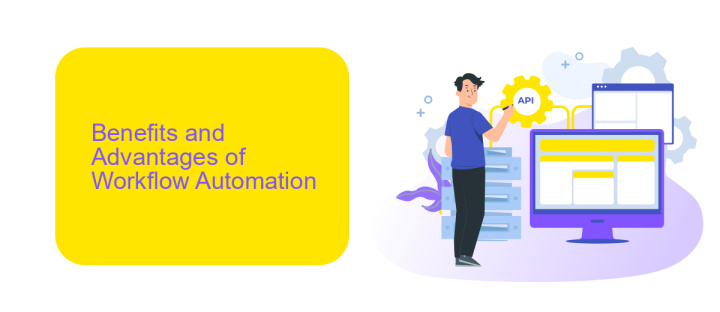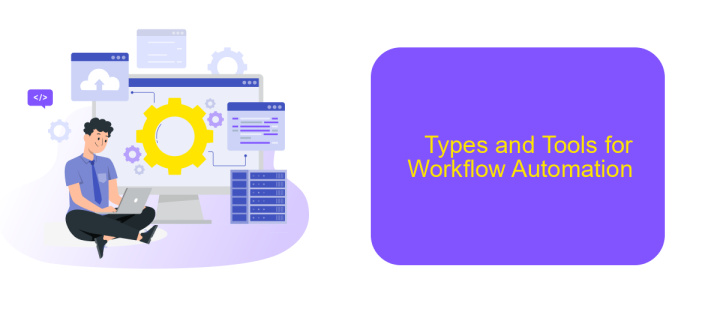What is Workflow Automation Example?
Workflow automation is the process of using technology to streamline and automate repetitive tasks and business processes. By implementing workflow automation, organizations can enhance efficiency, reduce human error, and free up valuable time for employees to focus on more strategic activities. This article explores a practical example of workflow automation, demonstrating how it can significantly improve operational productivity and overall business performance.
Introduction: Defining Workflow Automation
Workflow automation is the process of designing, executing, and automating processes based on pre-defined business rules. This technology allows businesses to streamline their operations, reduce manual labor, and improve overall efficiency.
- Reduces human error by automating repetitive tasks
- Enhances productivity by freeing up time for more strategic work
- Improves consistency and compliance with standardized processes
- Facilitates better tracking and reporting of workflows
One of the key components of effective workflow automation is integration. Tools like ApiX-Drive enable businesses to connect various applications and systems, ensuring seamless data flow and communication. By leveraging such services, companies can create more cohesive and efficient workflows, ultimately driving better business outcomes.
Benefits and Advantages of Workflow Automation

Workflow automation significantly enhances productivity by streamlining repetitive tasks, allowing employees to focus on more strategic activities. By automating processes, organizations can reduce human errors, ensure consistency, and accelerate task completion. This leads to improved efficiency and cost savings, as fewer resources are needed to complete the same amount of work.
Moreover, workflow automation facilitates better integration between different systems and tools. For instance, services like ApiX-Drive enable seamless connections between various applications, ensuring data flows smoothly and operations remain synchronized. This not only enhances collaboration but also provides real-time insights, aiding in informed decision-making. Ultimately, workflow automation empowers businesses to operate more effectively and adapt swiftly to changing market demands.
Example Use Cases of Workflow Automation

Workflow automation can significantly enhance productivity and efficiency across various industries by streamlining repetitive tasks and processes. Here are some practical examples of how workflow automation can be applied:
- Customer Support: Automate ticketing systems to route customer inquiries to the appropriate departments, ensuring faster response times and improved customer satisfaction.
- Marketing Campaigns: Use automation tools to schedule and send emails, post on social media, and track campaign performance, freeing up time for creative tasks.
- HR Processes: Streamline onboarding by automating document collection, training schedules, and employee record management.
- Sales Operations: Automate lead scoring, follow-up emails, and CRM updates to ensure no potential customer falls through the cracks.
- Data Integration: Utilize services like ApiX-Drive to automate data transfer between different software applications, reducing manual entry and minimizing errors.
By implementing workflow automation in these areas, businesses can save time, reduce costs, and improve overall efficiency. Whether it's through customer support systems or data integration services like ApiX-Drive, the potential for streamlined operations is immense.
Types and Tools for Workflow Automation

Workflow automation streamlines business processes by reducing manual tasks and improving efficiency. There are several types of workflow automation, each tailored to different business needs. These include rule-based automation, which follows predefined rules, and AI-driven automation, which uses machine learning to adapt and optimize processes.
Various tools are available to facilitate workflow automation, ranging from simple task managers to sophisticated integration platforms. These tools help businesses automate repetitive tasks, manage workflows, and integrate different software systems seamlessly.
- Task Management Tools: Trello, Asana
- Integration Platforms: ApiX-Drive, Zapier
- Business Process Management (BPM) Software: Monday.com, ProcessMaker
- AI-Powered Automation: UiPath, Automation Anywhere
ApiX-Drive, for example, is an integration platform that allows businesses to connect various applications and automate data transfer between them. This tool is particularly useful for setting up integrations without needing extensive technical knowledge, making it accessible for businesses of all sizes.
Implementation and Best Practices for Workflow Automation
Implementing workflow automation begins with identifying repetitive tasks that can be streamlined. Start by mapping out current processes and pinpointing areas where automation can save time and reduce errors. Choose a reliable automation tool that integrates well with your existing systems. For instance, ApiX-Drive offers seamless integrations with numerous applications, making it easier to automate data transfers and routine tasks without extensive coding knowledge.
Best practices for workflow automation include continuous monitoring and optimization. Regularly review the automated workflows to ensure they are functioning correctly and efficiently. Gather feedback from users to identify any issues or areas for improvement. Additionally, maintain clear documentation of all automated processes to facilitate troubleshooting and updates. By following these steps, businesses can leverage workflow automation to enhance productivity and operational efficiency.


FAQ
What is workflow automation?
How can workflow automation benefit my business?
Can you give an example of workflow automation?
What tools can I use for workflow automation?
Is workflow automation difficult to implement?
Time is the most valuable resource in today's business realities. By eliminating the routine from work processes, you will get more opportunities to implement the most daring plans and ideas. Choose – you can continue to waste time, money and nerves on inefficient solutions, or you can use ApiX-Drive, automating work processes and achieving results with minimal investment of money, effort and human resources.

